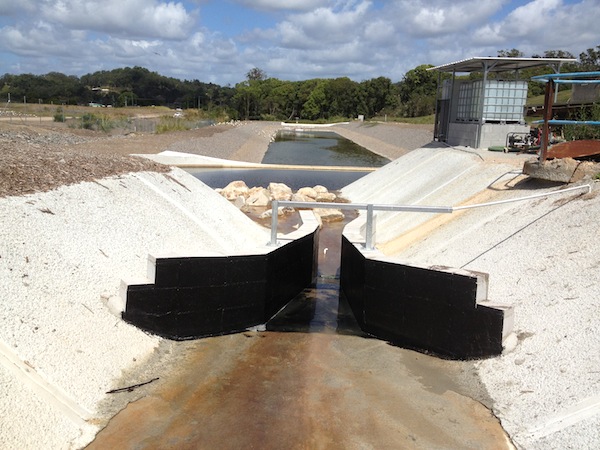Turbid turns to IoT for cloud-based sensor monitoring

Three years of unsuccessful efforts to automate remote sediment management have led Queensland-based construction services provider Turbid Stormwater Solutions to an 'Internet of Things' (IoT) solution that will use LogMeIn's Xively cloud service to monitor often remote facilities in real time.
Turbid's business revolves around the design of sediment basins, sediment traps, and other constructs that prevent runoff during large constructions from filling drains with sediment. These traps – which are often located in remote areas where large road and other works are underway – collect water so the sediment can fall to the bottom, then skim off the clean water.

Such traps need regular monitoring to not only ensure they are working correctly, but that they are receiving accurate and regular doses of sediment coagulants and other water-treatment chemicals.
A typical large construction project, such as a 7km section of Queensland's Bruce Highway being built between Gympie and Noosa, would require over three dozen such traps. Regularly visiting and servicing a large number of sites across large areas had imposed a significant burden in manpower and travel, and Turbid had long struggled to come up with an alternative.
"The isolation of these sites requires a manual way of doing this," director Ben Starr told ZDNet Australia, "and cheap connectivity to the field is a very necessary technology to do what we want – to greatly reduce the cost of this on construction sites."
"We have been banging our heads against the wall for three years to find a way to solve this problem."
Turbid recently found a solution in Xively, a hosted enabling infrastructure that facilitates Internet-based communication between non-computing devices.
Sensors used around Turbid's sediment facilities – for example, ultrasonic tools used to measure the height of collected stormwater, measurement probes for monitoring turbidity, or dosing systems for automatically dispensing the right amounts of treatment chemicals – are brought online using 3G wireless connectivity and connected to monitoring systems that allow Turbid operators to check their status in real time, from anywhere.
"The isolation of these sites requires a manual way of doing this, and cheap connectivity to the field is a very necessary technology to do what we want…. We have been banging our heads against the wall for three years to find a way to solve this problem."
The system for trapping and conveying the information is being built around open-source software and hardware components, which will be bundled into bespoke solutions that Turbid will increasingly offer to its construction clients. Building the system control software took around two months of development, while integration with Xively was complete in a few days.
Automation offers significant promise for reducing the cost of such facilities, according to Starr.
"These are remote devices that are installed in construction sites and hard to access," he explained. "Nobody is out there on the weekends, but you still have to look to make sure it hasn't broken down. Because Xively is hosted, we want to be able to see how it's performing from our desktops – hopefully not just for one client, but for multiple clients. And if I need to tell regulators anything, it's right there."
The idea of putting remote sensors into distant areas isn't new, with mesh-networking technology already available for many years. However, complementing such sensors with cloud-based communications makes them intrinsically easy to deploy.
Those deployment efforts are expected to become far easier thanks to the likes of IBM, which this week joined with partner Libelium to offer a DIY kit for IoT deployments called the Waspmote. That kit costs well over $2000 per unit, but includes 3G/WiFi/Bluetooth and other wireless connectivity as well as 60 different sensors for measuring gases, oxygen, carbon dioxide, temperature, motion, light, soil temperature, GPS position, and other features.
Complementing the system is IBM software called Mote Runner, which is being promoted to help standardise IoT deployments – a goal that is being pursued on an industry-wide scale by the Internet of Things-Architecture Consortium.
"We want to greatly reduce the cost of this on construction sites," said Starr, who notes that Turbid is planning to build its own off-the-shelf solution to simplify deployment at the more than 7000 sediment basin-using construction sites worked on every year in Queensland alone.
"It makes this technology accessible to construction clients that would otherwise not do the right thing, or would pay a lot of money to physically manage these devices."